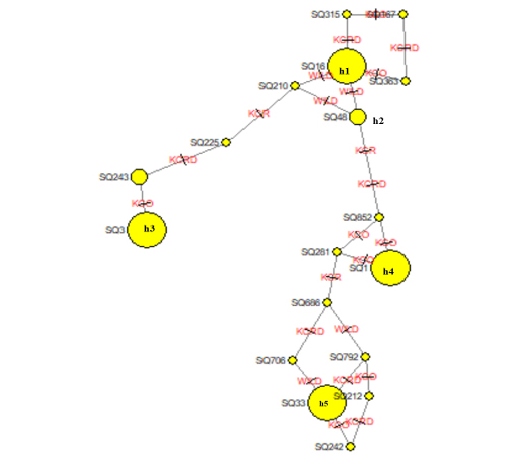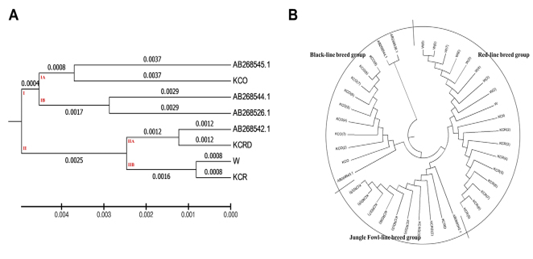Advances in Animal and Veterinary Sciences
Plumage color classification criteria for Korean native chickens A: Korean Wild chicken (W), B: Korean native chicken Red-line (KCR), C: Korean native chicken red with black line (KCRD), D: Korean native chicken Black line (Ogol; KCO).
Molecular phylogenetic analysis using maximum likelihood estimation and median-joining network profile of the haplotypes identified in Korean native chickens
Evolutionary relationships of taxa. The evolutionary history was inferred using the UPGMA method 8The optimal tree with the sum of branch length = 0.02527212 is shown. The evolutionary distances were computed using the maximum composite likelihood method and are in the units of the number of base substitutions per site. The analysis involved 40 nucleotide sequences. Codon positions included were 1st+2nd+3rd+Noncoding. All positions containing gaps and missing data were eliminated. There were a total of 1226 positions in the final dataset. Evolutionary analyses were conducted in MEGA6.
The identified SNP positions and haplotypes using the mtDNA D-loop control region in Korean native chickens
Maximum Likelihood fits of 24 different nucleotide substitution models









